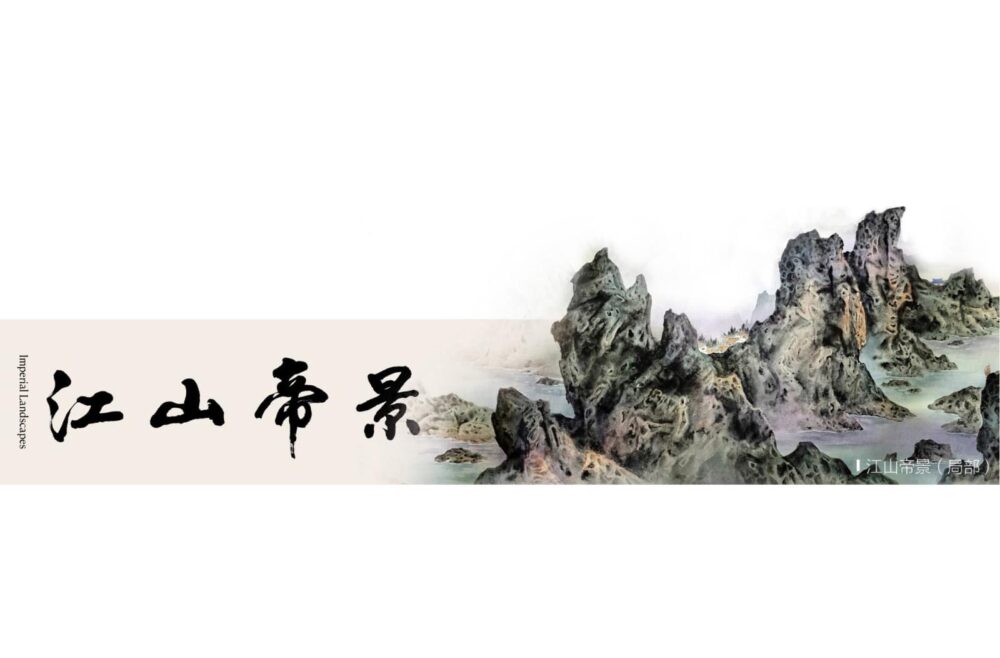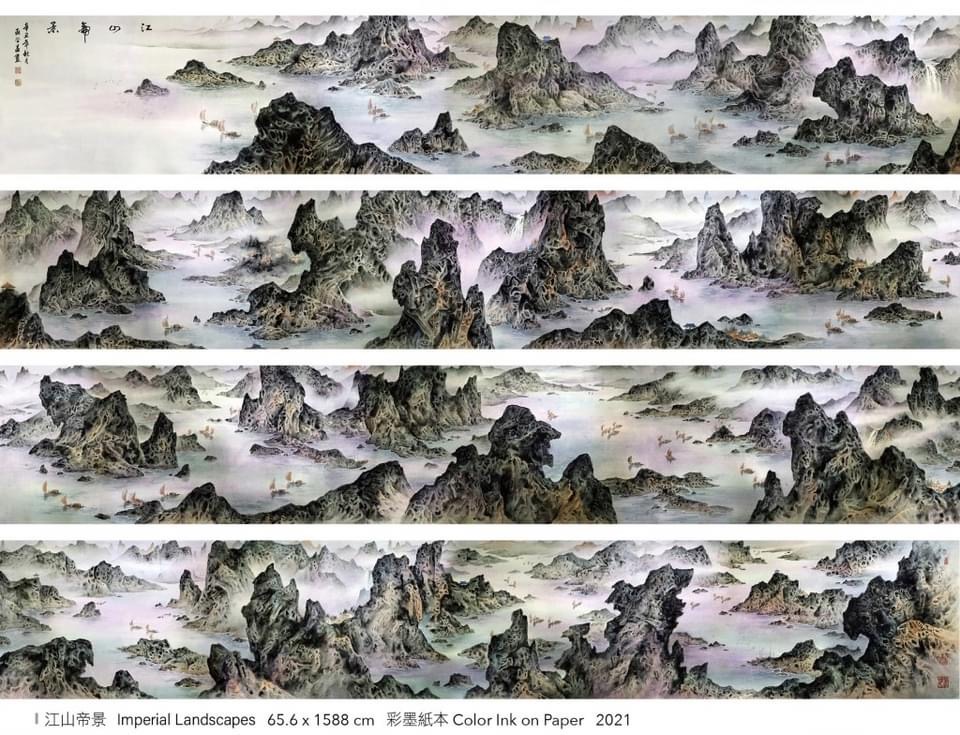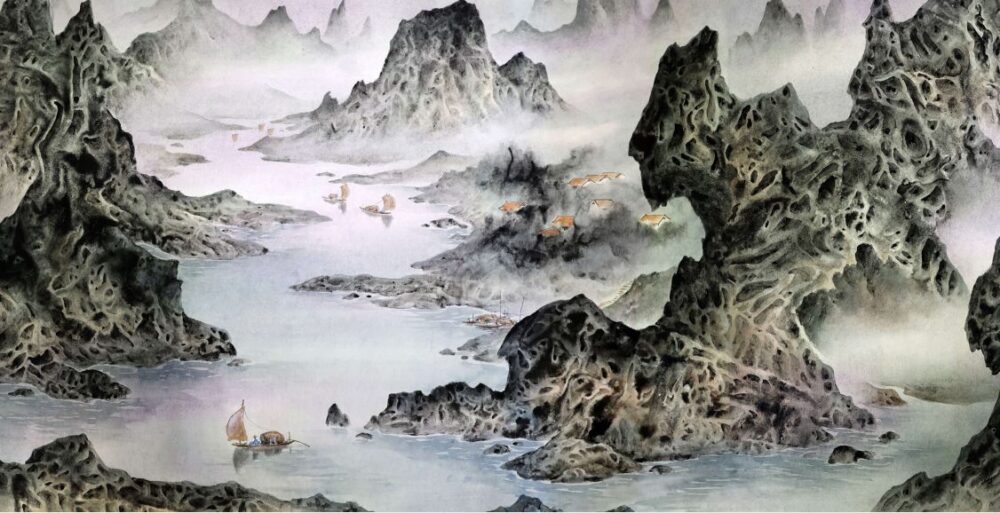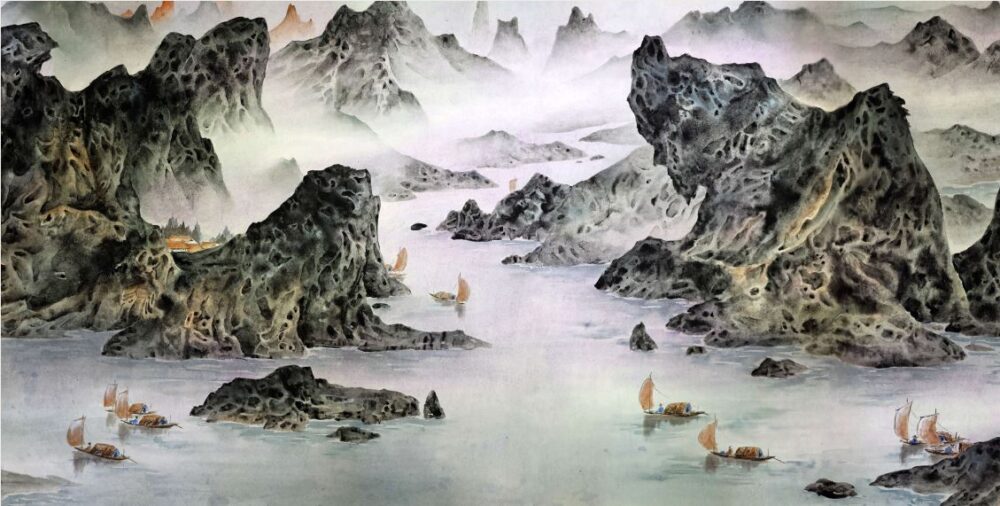No products in the cart.
Art Reviews
Strange Mountains and Mystery Rocks: Wu Deng-yi’s《Imperial Landscapes》
《Imperial Landscapes》 is Wu Deng-yi’s new work, which was specially selected as the theme work of Wu Deng-yi Art Museum in this year’s “ART TAIPEI Taipei International Art Fair”, that is different from the past. It depicts the beauty of mountains and rivers in incomplete real scenes, and has the artistic meaning of abstract sign (signifier/signified), interpreting and interpreting《Delicate And Beautiful Mountain Surrounded by Clouds》.
Another previously published 《Endless Miles》(2013, color and ink on paper, 72 x 1648 cm) was created in 2013. The work lasted for three years and was based on the magnificent landscape of the Three Gorges of the Yangtze River. The dialogue and imagination of the creator’s inner landscape and field reality. Ink and color ink works with the theme of《Endless Miles》are quite common in the history of Chinese art, but such huge scrolls are extremely rare.
江山萬里圖(局部) Endless Miles 72×1648 cm 彩墨紙本 Color ink on Paper 2013
Wu Deng-yi’s earlier《Endless Miles》is based on light blue and green, with ochre or ink as the lining between the painted scenes, so that the picture has clear layers, vivid changes without losing the whole; however,《Imperial Landscapes》It is a work that is different from the past. It depicts the beauty of mountains and rivers in incomplete real scenes, and has the artistic meaning of abstract sign (signifier/ signified), interpreting and interpreting its “synchronic” and “diachronic”. (diachronic), continuing the style of the 2020 classic work《Delicate And Beautiful Mountain Surrounded by Clouds》 (color and ink on paper, 66.7 x 66.7cm), “simulacrums” and “mindscapes” that are close to the real scene but heavy in structure. The painted landscapes of “Sumi Mustard Seeds” are metaphors and dialogues for the historical landscapes of space and time and the ravines in the heart. It combines realism and abstraction, narrative and allegory, and has a sense of “cultural continuity” and “contemporary”.
《Imperial Landscapes》and《Endless Miles》are the revival of Chinese long scroll color ink or ink landscape painting; Chinese landscape painting originated in the Wei、 Jin,、Southern and Northern Dynasties (220-589) and the subsequent Sui Dynasty, earlier than Western naturalism and external light, or the Barbizon School (Barbizon School) has a history of nearly a thousand years;《Imperial Landscapes》 uses “multi-point perspective” to emphasize “flat distance (changing focus), high distance (visceral vision), far-reaching (far borrowing, Chinese borrowing, and layers)”. During the Five Dynasties, Jing Hao and Guan Tong, who portrayed the majestic spirit of the mountains and rivers in the north, appeared in the north and south, and Dong Yuan and Ju Ran, who were admired by Mi Fu and Shen Kuo in the Northern Song Dynasty, represented the interest of Jiangnan in southern landscape paintings. The tradition of landscape painting in the Song Dynasty was mainly manifested in the style of ink and wash. The “literati painting” of the Song and Yuan Dynasties gradually moved away from the blue and green colors, and developed towards the ink and wash of the Yuan, Ming and Qing Dynasties.
In the lost context, the form of green and green landscape painting came to contemporary art, and the re-evaluation and in-depth discussion of early works of Chinese landscape painter Wang Ximeng(1096-1119) and the discussion of “A Thousand Miles of Rivers and Mountains”, along with many art appreciations and interpretations, has become a classic masterpiece of heavy color accumulation. It is worth noting that surrounding green and green landscapes has become the theme of modern color ink and ink expressions. Wu Deng-yi’s《Endless Miles》is a restart of the blue and green ink scroll, while Wu Deng-yi’s work《Imperial Landscapes》is in the same scroll format, but with More creatively “re-writing” the landscape, although the two sides of the strait are no longer “unstoppable”, but a brand-new urban style, but Deng-yi uses strange mountains and rocks to prove the “durations and changes of history”. artifacts), developed a new narrative technique.《Endless Miles》uses a magnificent realistic scene to express emotion in the landscape; 《Imperial Landscapes》 takes the virtual scenery of strange mountains as the theme of the picture, presenting the beautiful scenery of the world.
《Imperial Landscapes》scene sounds the same as “earth” scene; “Emperor” actually means “universe” and “ruler”; “Jiangshan-Maintains and Rivers” is as big as the universe and as small as hills and ravines, such as “sumer mustard seeds”; The painting has gone through the years, it can show that the strange stone has faded away, or it can stand firm like a rock through the ages, depending on how the viewer controls it. Wu Deng-yi’s strange mountains and rocks resembling Taihu Lake are a metaphorical technique, which not only connects our symbolic imaginations of “The Story of the Stone” and “Variety of Stones”, but also the creator’s use of the great and long-lasting, eternal and eternal The reflection on the “realistic image” of the landscape and the romantic narrative of the characters is also a “microscopic approach” to the narrative of time and space.





